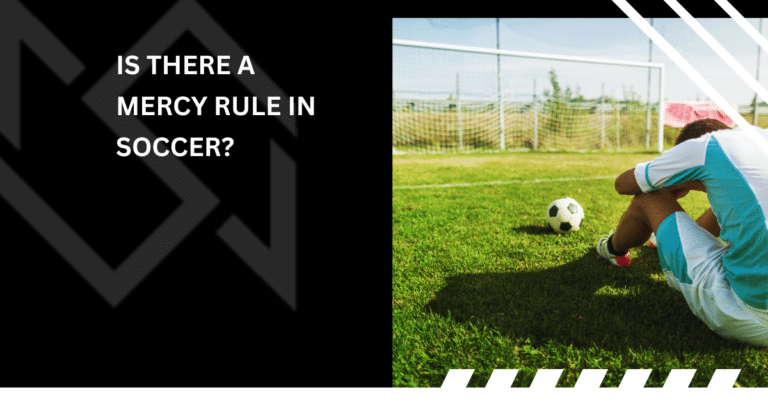What’s is a Red Card in Soccer?
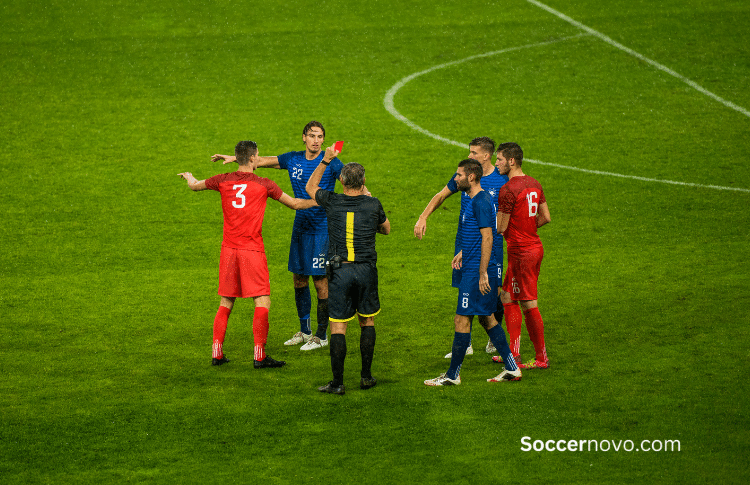
What is a red card in soccer? A red card is given to a player who has committed a severe foul that results in ejection from the match. In youth soccer, it has to be pretty severe for a ref to issue a red card but it happens!

Additionally, the player could be suspended from the subsequent game(s) in accordance with individual league rules.
If you are relatively new to soccer or just curious about why players get so worked up over red cards, this article will help you better understand the reason behind it.
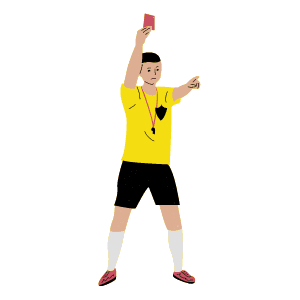 What Does a Red Card Mean?
What Does a Red Card Mean?
The reason why soccer players don’t enjoy getting a red card is that it means the referee ejected them from the current game. Not only does this affect you at the current moment but it also lets your team down as they have to play with one less player.
Getting a red card means that a player committed an offense that is so serious that they need to be removed immediately from the pitch. They will not be allowed to get back into the game whatsoever.
If a player receives a red card, this means the actions are beyond cautionary and more serious.
When the referee pulls the red card out, they also need to show it to everyone watching to show that a decision has been made. The same action happens for a yellow card.
Why Does a Player Get a Red Card?
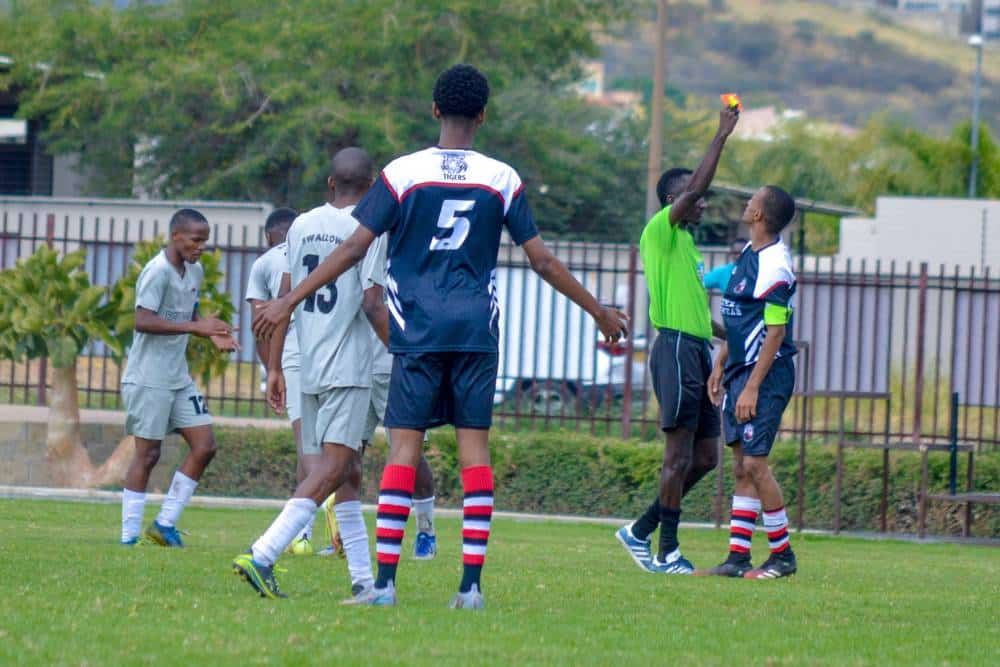
Getting a red card versus a yellow card can be a gray area (do you need any more colors 😂 )
With that said, there are a couple of general ways for a player to get a red card during a soccer match.
First, is if the player commits an offense using careless, reckless, or excessive force. This could be tackling a player with the purpose of injuring them or swinging their elbows intentionally.
The second is if the player collects two yellow cards in a single match. These are cautionary cards but can lead to ejection. This scenario happens more than the former in youth soccer.
What Are the Offenses That Would Warrant a Red Card?
There is only one way to avoid getting slapped with a serious red card, and it is to know what rules warrant the issuance of one and the players trying their best not to cause the offense.
According to Law 12 of IFAB rules, here is the list of the things that will result in an immediate red card:
- Denying the opposing team out of an obvious scoring opportunity – This could happen by deflecting or catching the ball with the player’s hands if it’s an obvious scoring play. Remember, only the goalkeeper is allowed to touch the ball with their hands.
- Serious foul play
- Spitting at or biting the opponent
- Violent conduct like throwing a punch
- Unsportsmanlike conduct (using offensive language and/or gestures)
- Receiving a second yellow card in the same game
Most of the offenses listed above are quite self-explanatory and are ultimately subject to the referee’s ruling.
At the youth-level, I’ve witnessed red cards being handed out but they are few and far between. Referees are very hesitant to pull out the red card so they will opt to show the yellow in most situations.
What Happens When a Player Gets a Red Card?
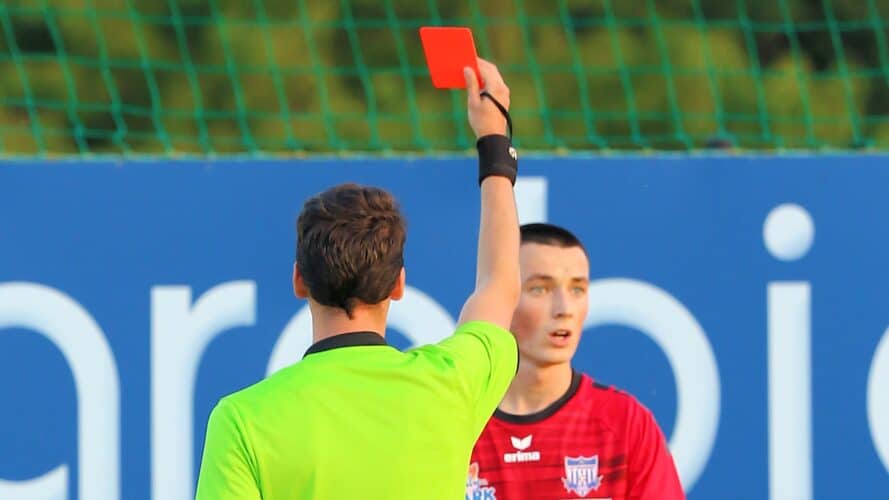
In youth soccer, when a player receives a red card, he or she is immediately asked to leave the field. They can usually sit on the bench for the remainder of the game but can no longer enter play. In many leagues, the player will be suspended for the next game as well.
In a professional match, the player will then be escorted outside of the field and the technical areas. This means that the ejected player is not even allowed to watch the remainder of the game from the team’s sidelines. Oftentimes, they will be just limited to their changing room.
After the offending player is removed from the vicinity of the pitch, the referee will restart the game and the opposing team will be awarded a free kick.
Conclusion
You now probably understand what a red card is and how you can get it.
As a player reading this, you should also realize that you put your team in jeopardy if you pick up a red card. They’ll end up playing with one less player but there could be more if others receive a red card as well.
In my opinion, at the youth level of soccer, to get a red card means a player is taking the game too seriously.
Players on any level should be able to play through frustration without picking up any card.
I wrote more articles if you are looking to learn more about yellow cards or just the basics of soccer.
FAQs About Red Cards
For professional matches, a player will miss the remaining game played and typically an additional one match suspension. Each youth league has its own rules. Most will have at least a one game suspension but could be multiple games depending on the severity of the red card.
If a player slide tackles with their studs up and connects with their opponent then it is considered a red card. If they slide-in studs up but don’t connect then it is usually a yellow card. Both are dangerous plays and a consequence is appropriate.
Yes, two yellow cards in a single soccer game equals a red card.
A maximum of four red cards can be issued for one team per game. If a fifth player gets a red card, the referee will call the game and the other team will collect the win.
The team cannot replace the player who received a red card. They will have a play with one less player.
Believe it or not, a player can get two red cards in a single game. It happened to Brazilian goalkeeper, Alisson, who received two red cards but each of them was overturned by VAR.

Written By: SoccerNovo
SoccerNovo is an independent youth soccer media brand built to help parents, players, and coaches better understand the game and the pathways available in U.S. soccer. Our mission is to make youth soccer simpler, clearer, and more accessible for everyone involved in it.
Let’s connect


